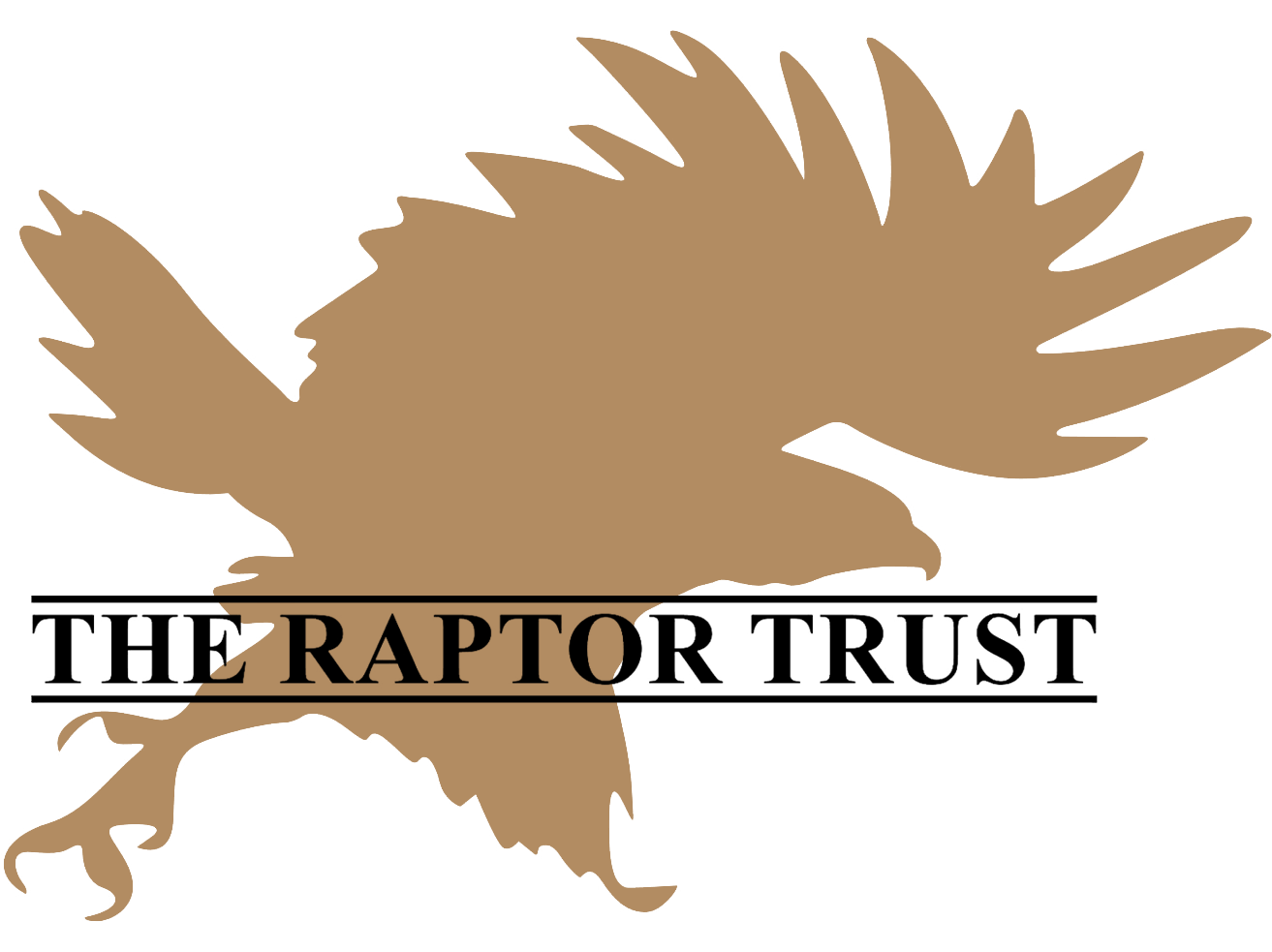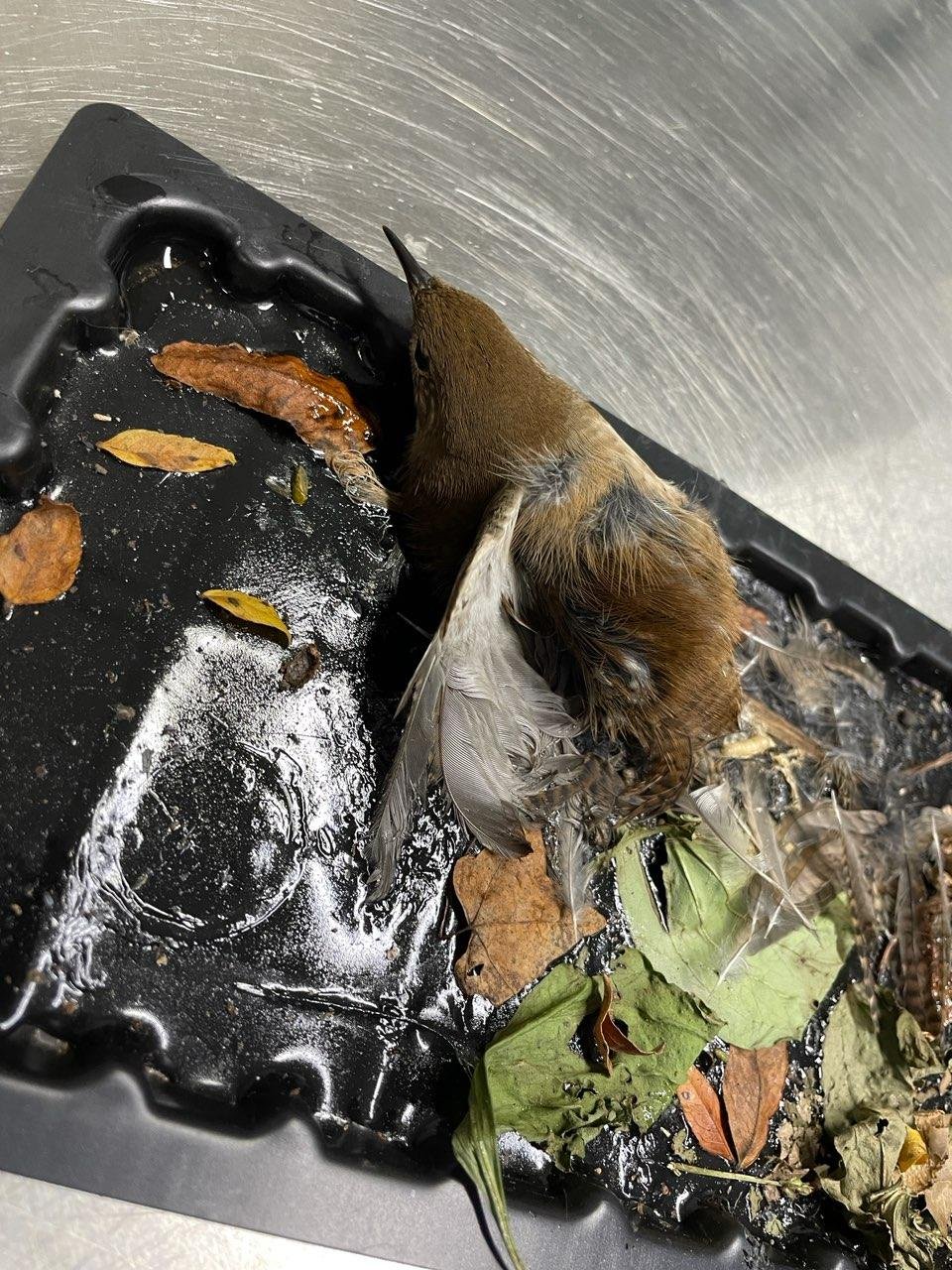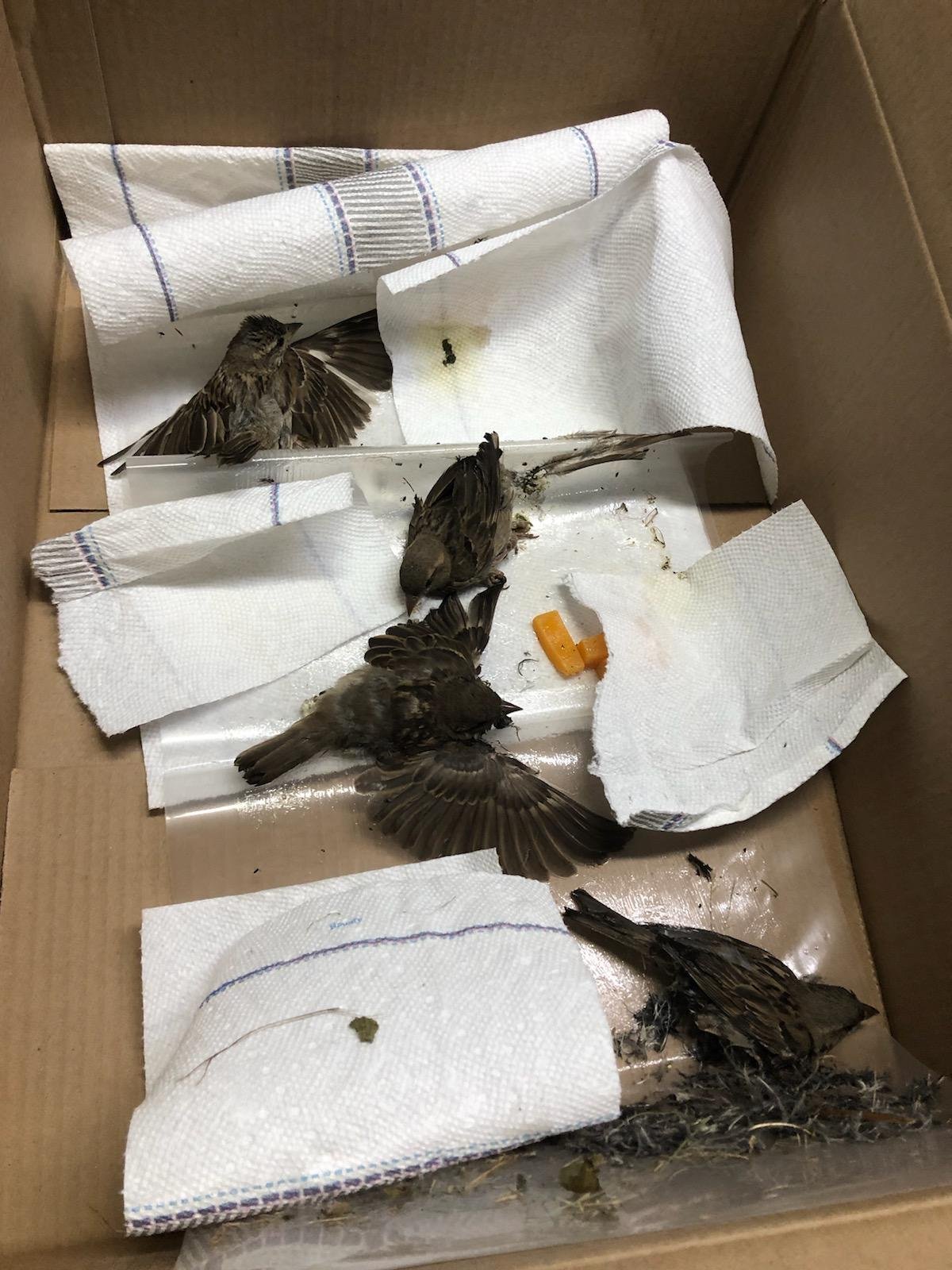Preventing Bird Injuries: Pest Control and Lawn Care
Many wild bird injuries are caused by, or related to, human activities. The vast majority of the injuries are accidental and often difficult, if not impossible, to prevent. But there are precautions you can take to minimize the chance of a wild bird becoming injured because of your activities. We believe the following suggestions will be helpful to you, and the birds.
Use Alternatives to Chemical Pest Control and Lawn Care
Many commonly used insect sprays, weed killers, and rodent poisons are highly toxic to birds. Herbicides and pesticides that are sprayed in your yard can contaminate their food and water supply, nest material, dirt used for dust baths, and the air they breathe. Many of the birds brought to us that exhibit central nervous system disorders have been found on or adjacent to recently chemically treated yards. Don’t be fooled by chemical products touted as being “organic”. Many environmentally destructive chemicals are organic. Be wary of products merchandised with the meaningless prefix “eco” or “environ”. Read a product’s warning label for a truer sense of its impact. There are alternatives to chemical pest control and lawn care. Reference guides to safer yard care and gardening can be found at your library or bookstore.
Poisons used indoors can easily find their way outdoors and into the food chains. Hawks, owls, and other predators can become the unintended victims of secondary poisoning when a poisoned rodent is ingested. Live traps are available to catch small rodents, but if necessary, the old-fashioned mouse and rat traps are still the quickest and most humane way to dispatch unwelcome rodents.
Remember that just because a product may be chemically safe for the environment doesn’t mean it is safe for all wildlife. A gluey paste commonly used to control tree-infesting insects is also marketed by several manufacturers as a “non-toxic” way to deter birds from perching on roofs and ledges and even to keep squirrels off bird feeders. The substance is very harmful to birds. Birds traveling along the treated ledges or trees become tangled in the gluey substance. The material fouls their feet, beaks, and feathers, incapacitates and eventually kills them.







